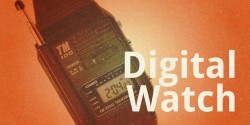There has been quite a bit of action on the digital and internet radio front this past week, including more terrestrial radio in smartphones, the sign-off of a streaming radio service, and indications that free on-demand streaming music may have reached its peak, ready for an inevitable decline.
T-Mobile to Activate FM in Smartphones
FM radio chips will be lighting up in another carrier’s Android phones. Just a couple of weeks after AT&T’s announcement that it would activate the FM radios on new phones in 2016, the always colorful T-Mobile CEO John Legere announced on Twitter that his company will do likewise:
Hey @NextRadioApp – We heard you! We’re saying yes to FM chip and will push our OEM partners to support! #sayyestoFMchip
— John Legere (@JohnLegere) August 14, 2015
That leaves Verizon–the biggest wireless carrier–as the last holdout amongst the top four.
Though T-Mobile’s timeline isn’t known, Legere’s clearly indicates that the company will support the NextRadio listening app.
Mad Genius Bows Out
Less than a year ago I wrote about Mad Genius radio, an ad-free subscription streaming radio service that touted how it would pay much higher royalties to songwriters and artists than ad-supported services. When Mad Genius debuted founder Eric Neumann told me, “We’re profitable with a few hundred thousand paid subscribers. We don’t have to beat Pandora, or even be #5, in order to be profitable and pay the highest royalty rates.”
It turns out the market for the streaming music dollar was still too competitive for Mad Genius to reach that point of profitability. Neumann told RAIN News that the service is shutting down on Thursday. He said that despite the company’s best efforts their efforts, there was “so much noise that we are virtually unknown and untried.” Also, the company was unable to scare up investments because of the perception that the field was already too crowded by big players like Google, Apple, Pandora and Spotify.
Rdio Adds a Vowel with Terrestrial Radio
If you use the global #4 streaming music service Rdio now you have access to an additional 500 terrestrial broadcast stations owned by Cumulus, the second largest radio operator in the US and a Rdio stakeholder. Though I can’t imagine any Rdio user would object to having live radio streams available through the app, it’s also doubtful there was any strong demand for the feature either, since Rdio’s primary allure is on-demand listening, like Spotify.
Cumulus stations like San Francisco’s KFOG and Chicago’s WKQX are still available on competitor iHeartRadio’s app and platform, and the stations can still be streamed from their own websites. So it’s not like Rdio has any exclusivity to Cumulus stations.
Besides not having to switch apps to listen to live radio, the other main convenience is the ability to bookmark songs to add to a playlist. Paid users can download the songs for offline playback. That might have been a killer feature a decade ago, but now that the internet is primary medium used to discover new music, the added value of tagging songs as they’re played live is limited.
The Inevitable Decline of Free Streaming Music?
Rdio started out as a subscription-only service, but then added a free ad-supported tier two years ago, calling upon the ad sales expertise of its partner Cumulus. Obviously this was to keep up with Spotify and Pandora which gained market dominance with their own ad-supported free tiers.
However, the lower royalty rates paid to artists from the ad-supported services had brought them more scrutiny and criticism in the last year. More importantly, the major labels are pushing for more money, which may be leading Spotify to consider putting stricter limits on its free service.
A report by Digital Music News says that Spotify may be gating some music releases so that they are only available to paid subscribers, or only available to free users for short windows. Spotify’s contracts with the US major labels run out October 1, so the pressure is on.
While I certainly have enjoyed access to free, ad-supported streaming, in the back of mind I’ve also thought that the clock is ticking on the model. While the shift to streaming music services was inevitable, and the ad-supported model helped to jump-start its adoption in the US, the revenue limits for artists and labels have made it a bit of a devil’s bargain. Yet, because the streaming platforms, like Spotify, need the labels’ cooperation for continued success, the labels now have some leverage. This is no doubt aided by Apple Music and TIDAL both offering only paid subscription services.
Ad-supported on-demand streaming music isn’t going away, but I won’t be surprised if the free tiers become more limited, not just in terms of catalog but also in terms of listening hours. Personally, I think it’s reasonable to pay for on-demand access to music without ads, as long as both the terms and the sound quality are reasonable. Once I found a service that met those qualifications I subscribed, and I don’t mind paying that bill one bit.



